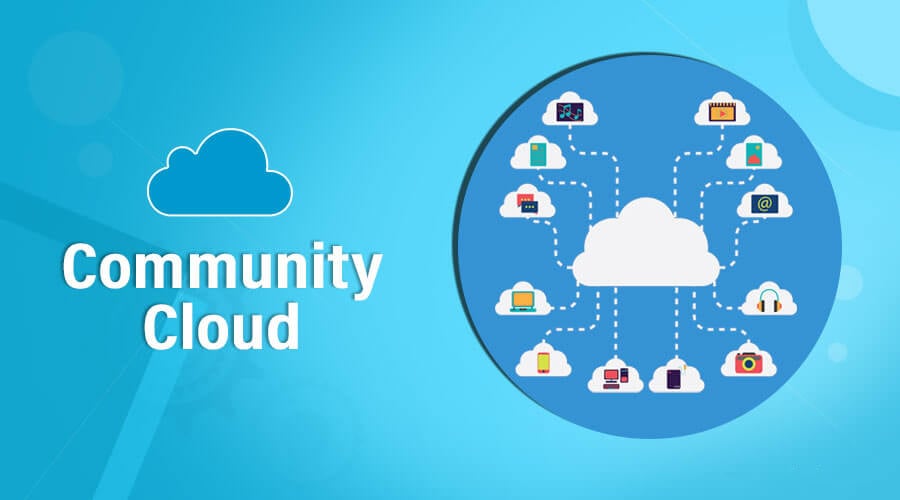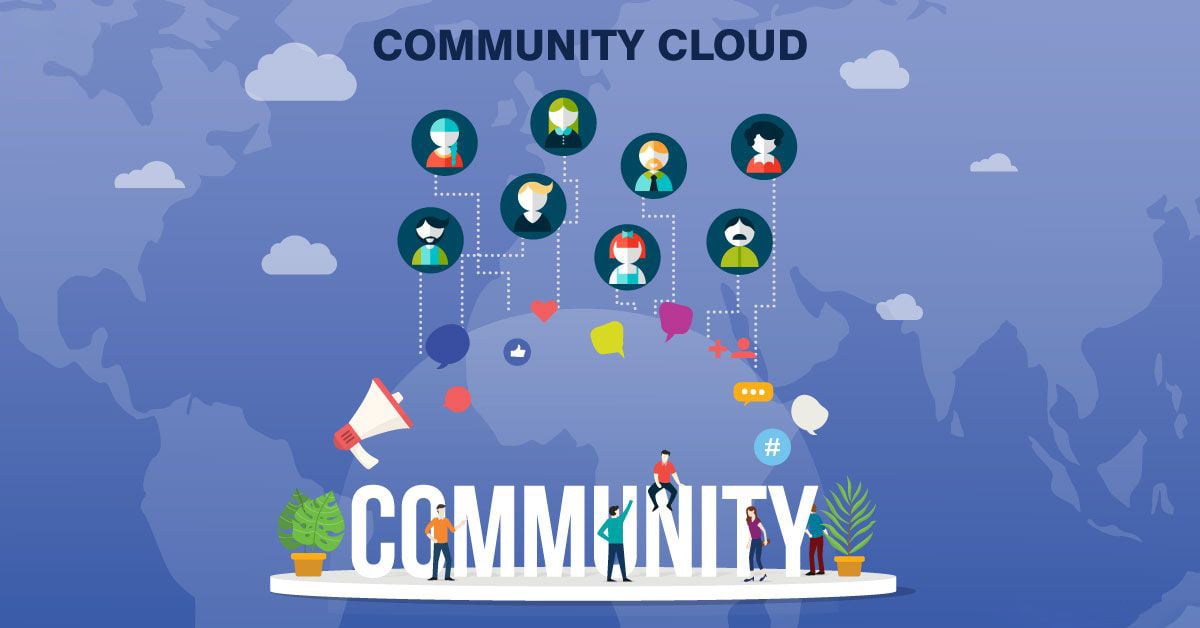What is Community Cloud?
Choosing the right type of cloud deployment is vital and an integral part of every industry. Knowing the difference between private, public, and community cloud ensure that an educated decision is being made. The community cloud is a new concept that is somewhere between the public and private cloud.
What is Community Cloud?
A community cloud is a type of private cloud, which offers dedicated infrastructure for organizations from a specific community with common concerns like security, compliance, jurisdiction, etc. It is an ideal solution in terms of cost-effectiveness, privacy, and security.
It combines the features and benefits of different cloud types into a single solution customized to a specific industry (Banks, insurance, government, enterprise, etc.). It is also appropriate for organizations working on a similar project, research topic, or application and requires identical resources.
It is not open to the public; it is only accessible to a selected group of people. It is adaptable as it can be designed and managed by one or all members of an organization and a third-party provider.

Some benefits
Flexible and Scalable
With this type of deployment, compatibility among users is guaranteed and properties can be modified on an individual use case. This also lets companies better interact with remote employees.
As this cloud is a community of users, it is scalable with services, hardware resources, and manpower. This type of cloud looks at the account demand growth and pivots according to the users’ needs.
Secure
Community deployments operate in a similar way to their private counterparts. Users are able to configure security levels for their own data. Compromising data hurts all of the tenants in the cloud.
Convenience and Control
Resources, infrastructure, cloud resources, and more are all shared among organizations. All of the tenants share and own the community cloud infrastructure, so decisions are made collaboratively. Data is kept closer to them but has less complexity than in a private cloud.
No Overheads for the IT Department
Community cloud embeds data, applications, and everything in a single cloud environment reducing the overhead of IT departments. This ease of use eliminates the need for tenants to hire additional personnel to manage the system.
Environment Sustainability
In the community cloud, organizations use a single platform for all their needs, which dissuades them from investing in separate cloud facilities. This shift introduces a symbiotic relationship between broadening and shrinking the use of the cloud among clients. With the reduction of organizations using different clouds, resources are used more efficiently, thus leading to a smaller carbon footprint.
Examples and Use Cases
Cloud providers have developed community cloud offerings, and some organizations are already seeing the benefits. The following list shows some of the main scenarios of the community cloud model that are beneficial to the participating organizations.
- Multiple governmental departments that perform transactions with one another can have their processing systems on shared infrastructure. This setup makes it cost-effective for the tenants, and can also reduce their data traffic.
- Federal agencies in the United States. Government entities in the U.S. that share similar requirements related to security levels, audit, and privacy can use the community cloud. As it is community-based, users are confident enough to invest in the platform for their projects.
- Multiple companies may need a particular system or application hosted on cloud services. The cloud provider can allow various users to connect to the same environment and segment their sessions logically. Such a setup removes the need to have separate servers for each client who has the same intentions.
- Agencies can use this model to test applications with high-end security needs rather than using a public cloud. Given the regulatory measures associated with community clouds, this could be an opportunity to test the features of a public cloud offering.

Community Cloud Challenges
It likes all other cloud deployment models and has several challenges.
A community cloud, which is shared among numerous businesses, provides more security and privacy than a public cloud. This means that dealing with security issues and establishing service-level agreements (SLAs) with other parties could be difficult.
Although less expensive than a private cloud, it is more expensive than a public cloud and, depending on where it is deployed, may require in-house cloud professionals.
Because resources like storage and bandwidth are limited and shared among numerous users, a community cloud’s performance may suffer.
Conclusion
Building a community cloud involves more focus on business processes and cooperation than technical considerations. After all, a community cloud is just a modified private cloud. A community cloud can be a powerful tool for businesses with the same objectives and requirements. It can even serve as a background for industry-based innovations. When deciding on infrastructure migration to the cloud, private and public clouds are not the only options; community clouds can also fit the bill.